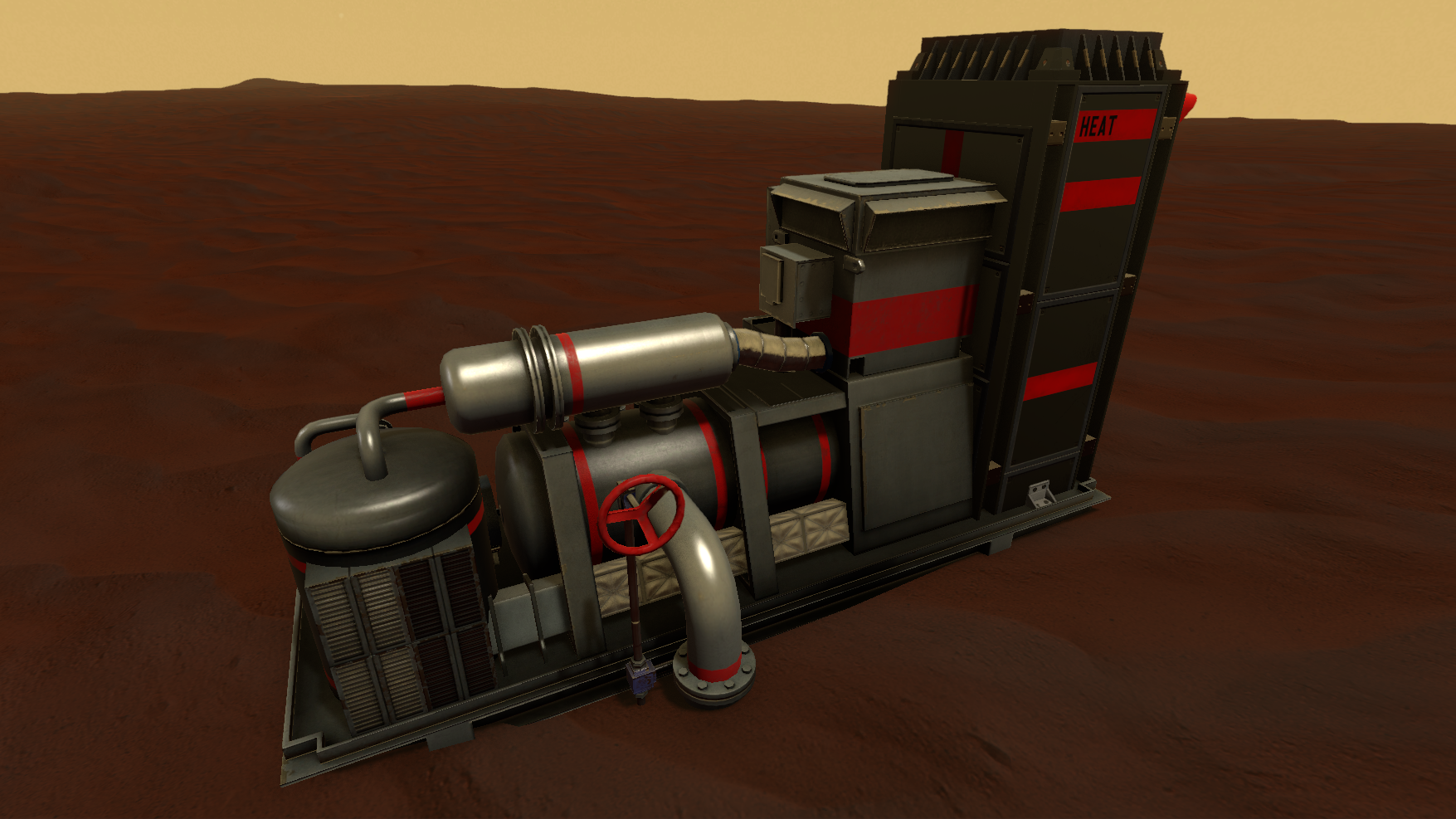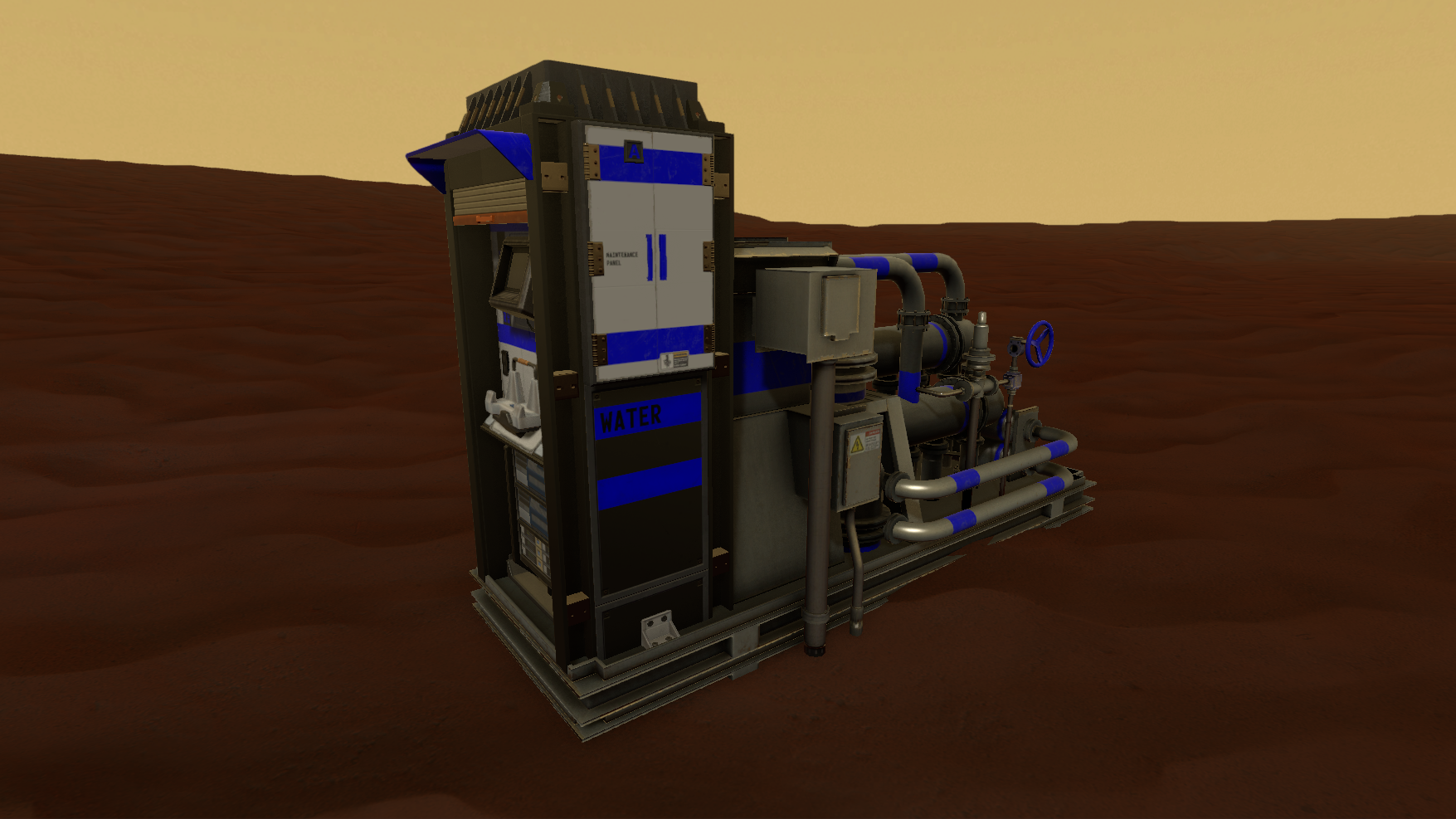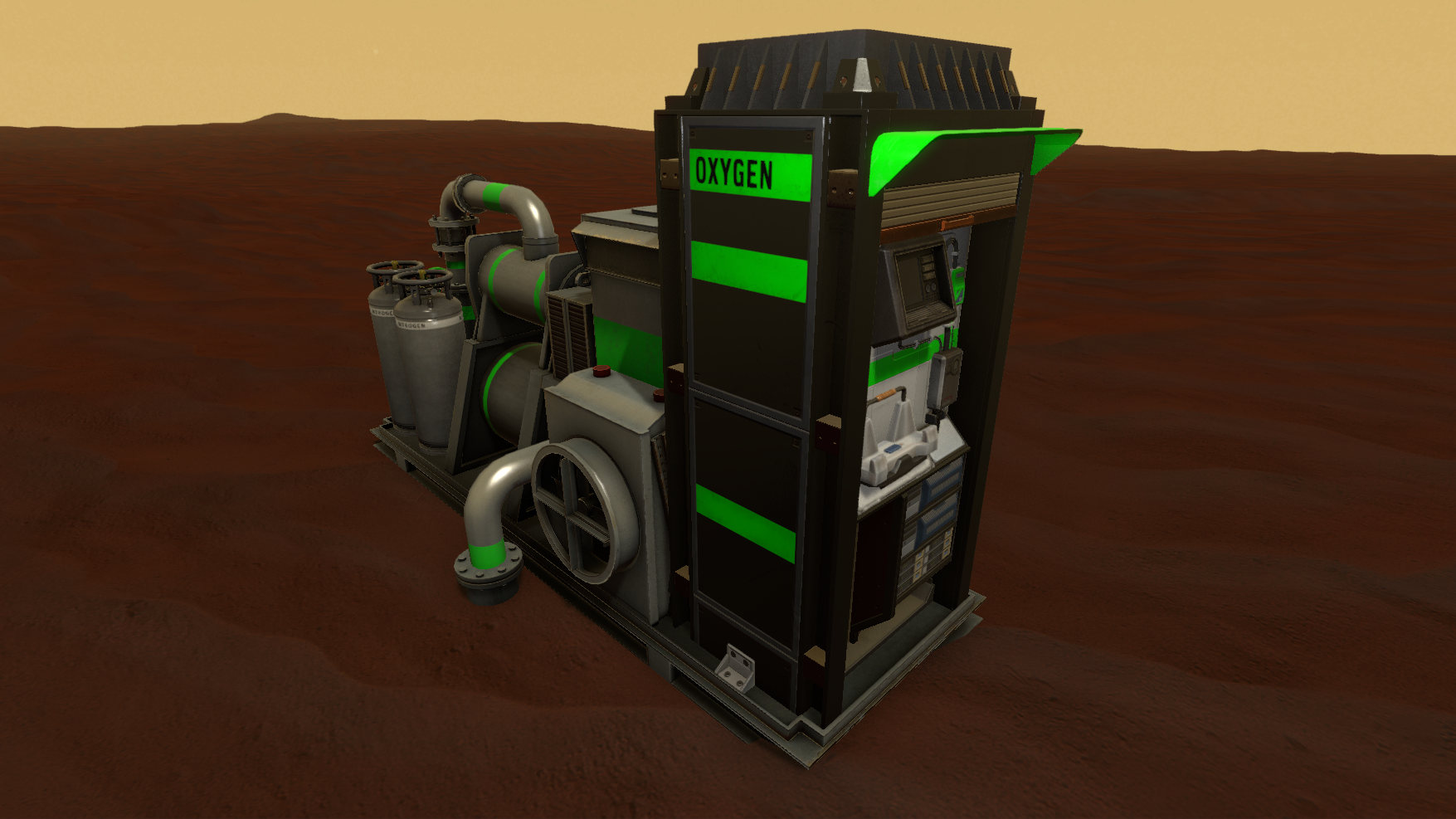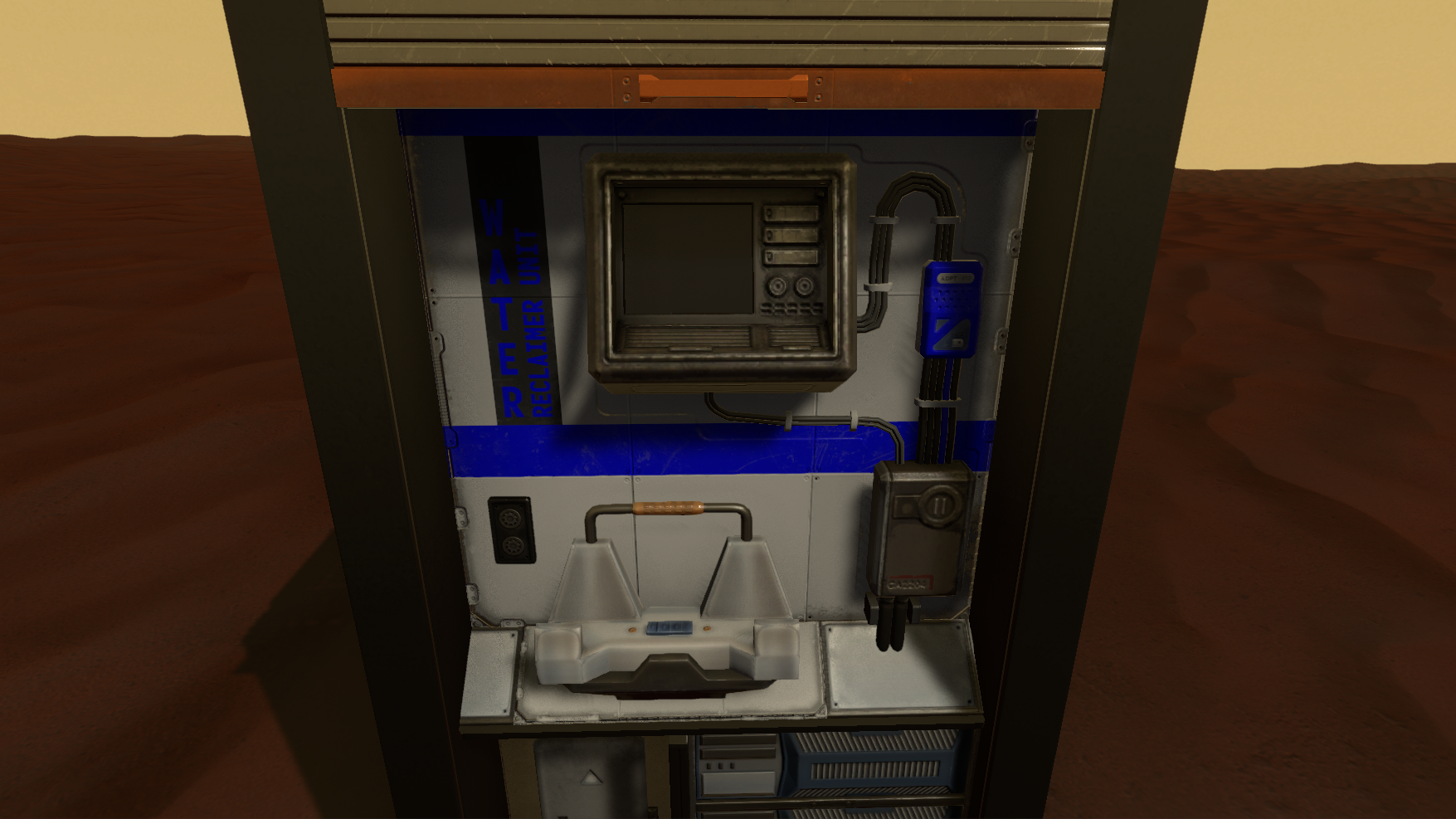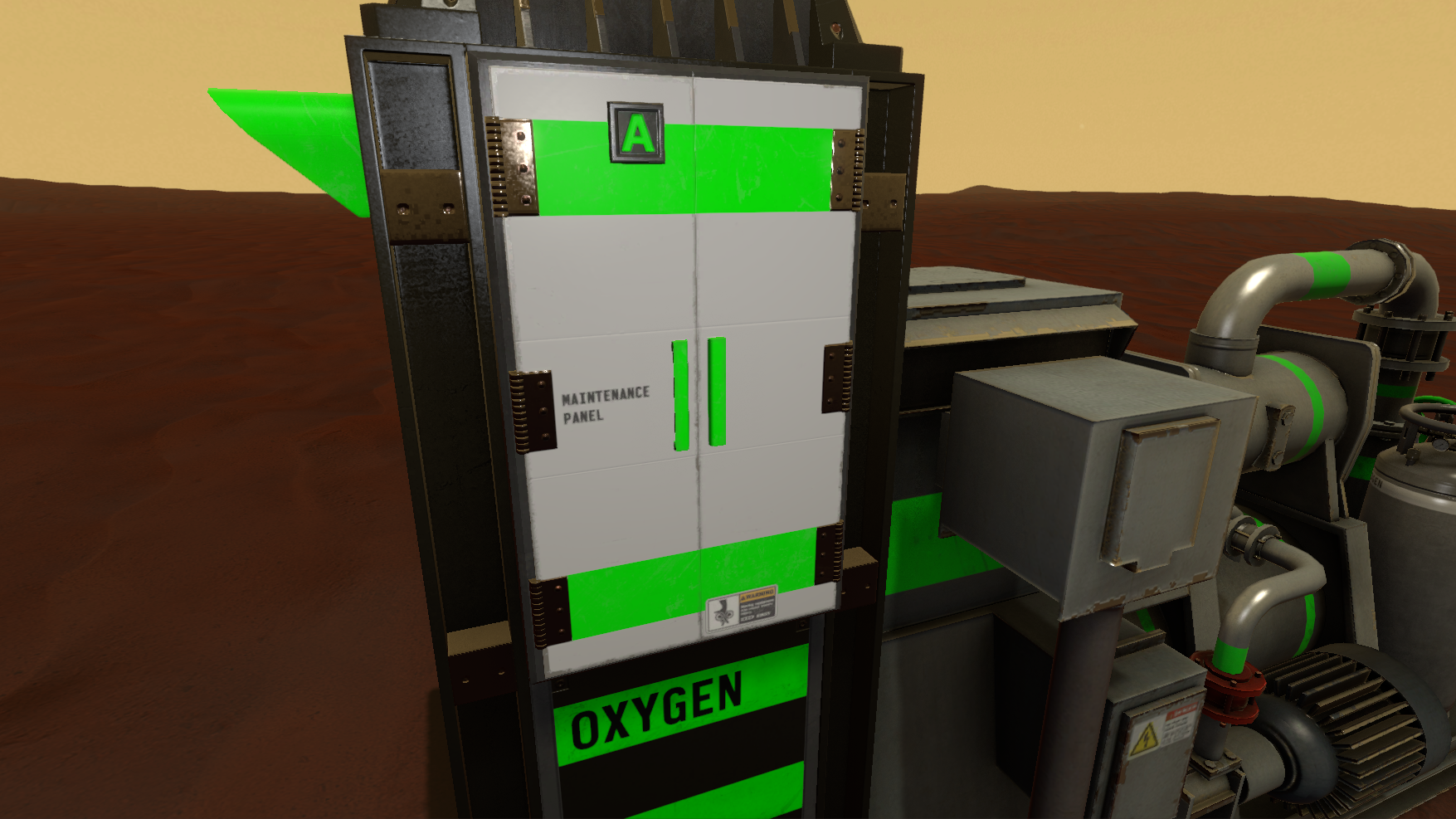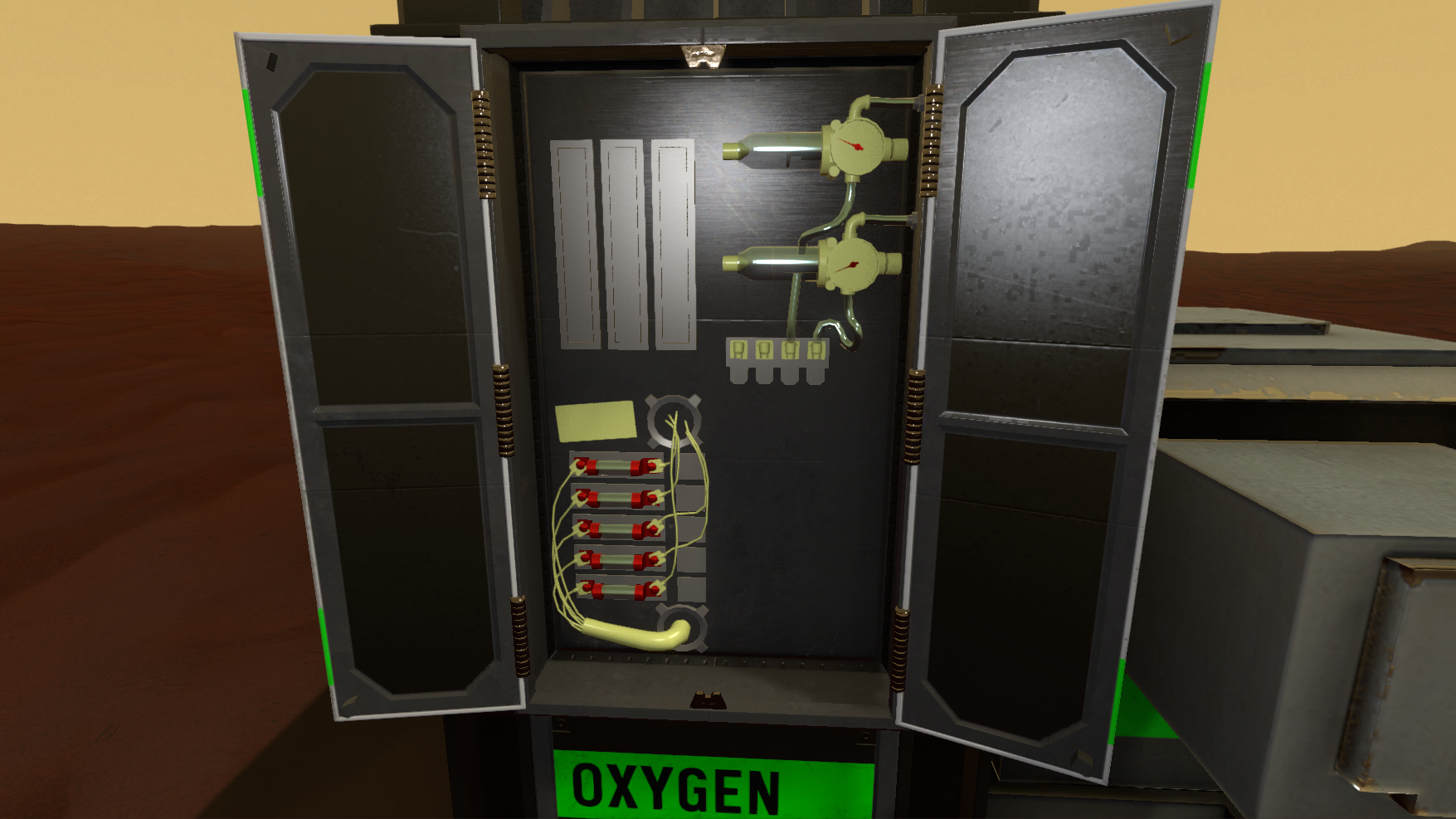Lacuna Passage - Devlog #66 - Exterior Modules and Maintenance Panels
We have nearly finished all the exterior modules for Foundation Base. Here’s a quick look at the final designs for the three main units - The heater, water reclaimer, and oxygenator:
Each of these units are color coded with reflective and vibrant paint colors that will help you distinguish them from a distance. This was important that we use textures for this purpose, because creating unique silhouettes would be expensive not only in development time, but also in polygons. Obviously the machines each have their own style, but mostly we are just swapping out the diffuse textures to change the colors since all three units are utilizing the same normal, specular, and gloss textures.
As you can see, we have added a control hub to the front of each module. This is where you will normally approach the machines, and interact with the control panel.
From here you will be able to perform diagnostic checks from your datapad. You will also be able to download documentation about possible repair procedures. Sometimes you will be required to shut off the power to the machine prior to doing these repairs, so you may have to perform your work fast before the Habitat loses too much heat or oxygen.
Most repairs will direct you to a particular maintenance panel. These panels vary depending on the machine, but they are always located to the side of the control hub, designated by letters. For example, if you run a diagnostic that returns a particular electrical error code, your downloaded instructions may direct you to then shut off the power source and replace a fuse in maintenance panel A. When you approach the maintenance panel, here’s a peek at what it might look like:
When you open the panel you will be presented with multiple components, each corresponding to different types of repairs. You will need the correct pieces of equipment to perform the repairs. For this example you would notice that one of the fuses is burnt out in the bottom left portion of the panel, so you would need to remove that fuse and replace it with one from your inventory.
Obviously the texturing for these internal components is not complete, but you get the idea. There will be many different pieces and repairs required for these units, but after some practice you may start to learn the quickest ways to fix them. Or better yet, you may be smart enough to run diagnostic checks regularly to repair possible issues before they ever occur.
Feel free to comment below!

